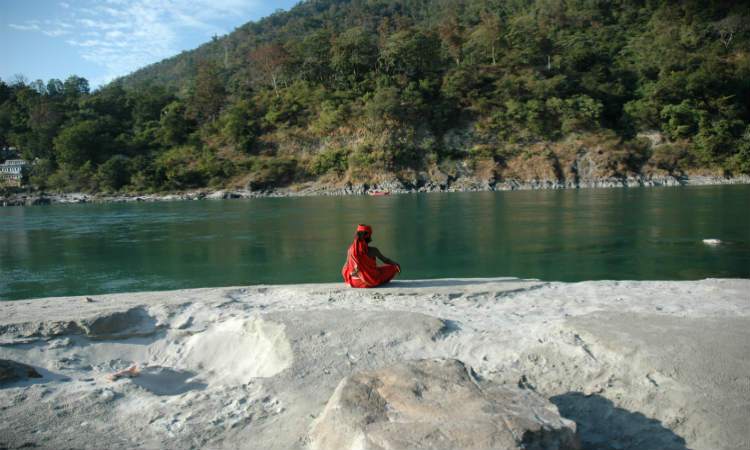It is said that the only thing guaranteed in life is change. Yoga is the practice of willingly accepting that change with grace, peace, and love in our hearts.
A new movie “Yoga Maya” created by a beautiful teacher, Yogi Arvind, inspired me to write this piece. I have been teaching for 18 years and notice that most students focus on just the posture. There is so much more to yoga that is so intriguing, and you can get so much more benefit out of it.
Here is what I discovered that has opened up my life and my yoga practice: yoga contains all that I need to live a contented happy life that is rich and full and loving every day.
The 5 Essential Elements
I like to view Hatha yoga as a system of combining the elements: Earth, Water, Fire, Air, and Ether. Hatha pronounced Ha-Ta means 'sun-moon.' It is the joining of the Masculine and the Feminine. The masculine is Strength, and the Feminine is Receptivity.
Therefore, Hatha is Strength Receiving. It is the balance between matter and energy, the masculine and the Feminine.
Being on the mat can involve all of these elements to make your practice deeper, more all-encompassing, and more powerful. The postures (asanas) start with Earth, the first element.
1. Earth
Earth is our mother, our life giver, one whom we respect. I begin with the foundation of the pose and connect it to the mother, the earth. This gives me a base from which to grow the pose. Balancing, standing, sitting, or lying down—it is about your connection with Her.
If you are also a yoga teacher, we know that primarily we look at how a person connects to the earth before we do any adjustments.
2. Fire
Next, I bring in the Fire, the strength needed to do the pose. I move into it from my rooted connection to the mother. The masculine meets the feminine, and the breath comes from below and rises up—gently creating energy locks. Pull up the perineum and pull in the belly (inward and upward); this is the beginning of going inward.
Doing these Bandhas (Locks) creates a sense of clarity, neutrality, calmness, and improves concentration and prepares you for meditation.
3. Water
After arriving in the posture, receive the Feminine, the Water element. For this to happen, I need to soften so that receptivity can take place. It’s written in ancient texts "the posture shall be firm and relaxed.” This allows the energy to flow through the body and receive healing.
Additionally, I like to soften by going inward at this stage; maybe I close my eyes or create a gaze that is soft but focused on some point.
4. Air
The breath and the body are linked together. The breath is the first to move and the last to end. The pace of the breath regulates the speed of the movement. If I lost the breath getting into the pose, I make note of it, and now come back to focusing on the Breath.
Using Ujjayi (a breath that comes from deep in the back of the throat and makes a whispering sound), I hold the posture for an appropriate time and breathe into it. This breath brings Prana (life force) into the body and builds health and vitality. This is, in my opinion, the most important element.
This is the deep connection to whatever it is that you think created you. This is intimacy with the self. This is a way to practice causing no harm, the place to practice non-attachment, and non-aversion, to walk lightly on the earth, which are important principles of yoga.
Practicing in this way, keeping the breath steady and smooth, staying inward, and being strong and relaxed allows you to practice Truth and ask yourself, “Where am I really in my practice?” With truthfulness in mind, I adjust the pose.
If the posture is firm but not relaxed and there is no ujjayi breath, then I am not being truthful to myself or my practice. If my posture is too relaxed and not firm, my mind wanders, and the energy flow is not sufficient.
5. Ether
Finally, it brings us to the Ether (space), the last element in the practice, the non-thinking of the brain. This is the going inward, the pause of the breath at the top and the bottom of each breath. It is where I can go deeper and deeper.
Practice yoga with the elements in mind and be rewarded with a dance of life, a flow that is the balance of the sacred feminine and the masculine. In this dance, this balance, this connection on the mat, you learn to take that tranquil feeling, that energy, that balance off the mat and bring it into your life.
This is why we call it Yoga Practice—practice being the key word. It is the practice of living the extraordinary in the ordinary, in a non-obsessive, non-compulsive way, with balanced energy that is neither adverse to what happened nor attached to what is happening. It’s a balanced energy that is not fearful of what the future brings.
In this way, you live a life that flows and moves as if in dance and song, no matter what…a life filled with grace and beauty.
Namaste (The extraordinary light in me recognizes that same beautiful light in you).

Want to contribute as a member of the DOYOU community too? Submit your article right here!


